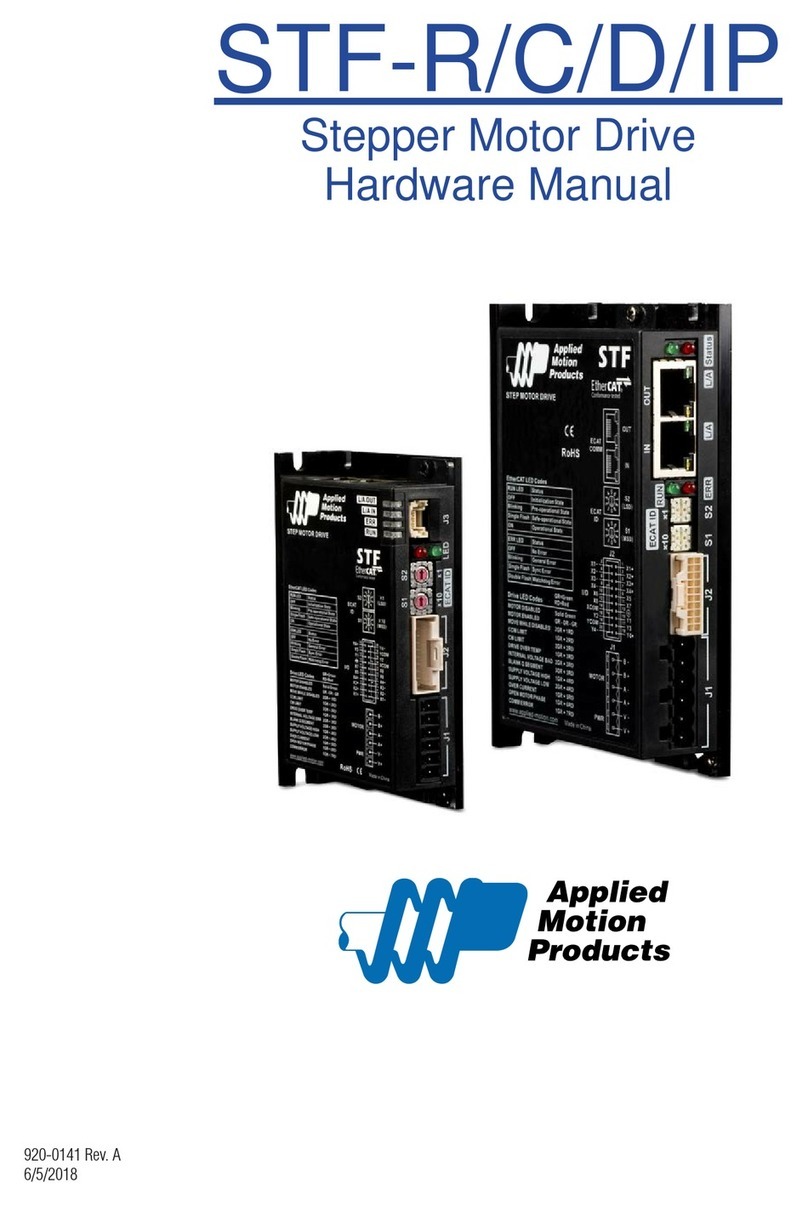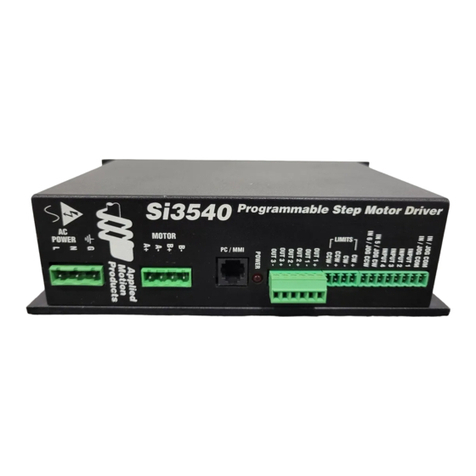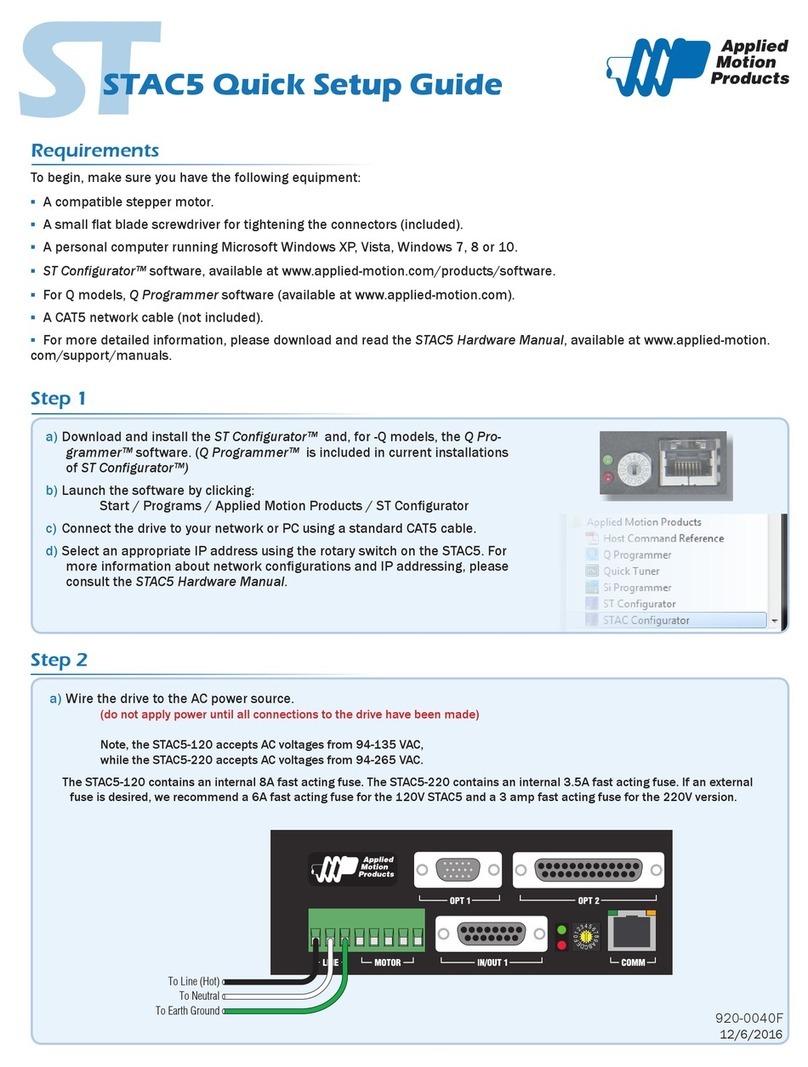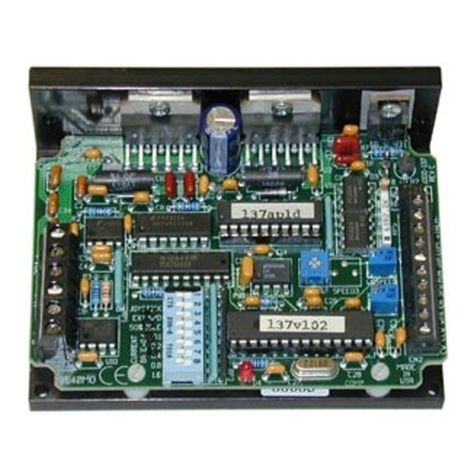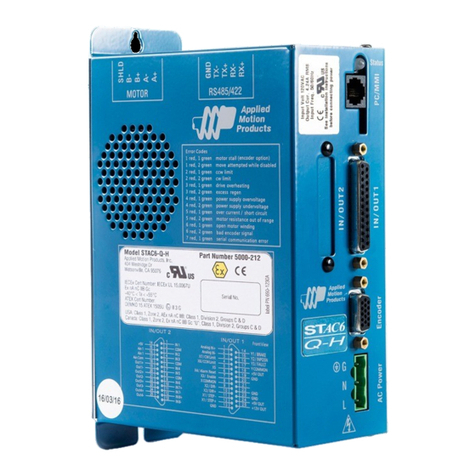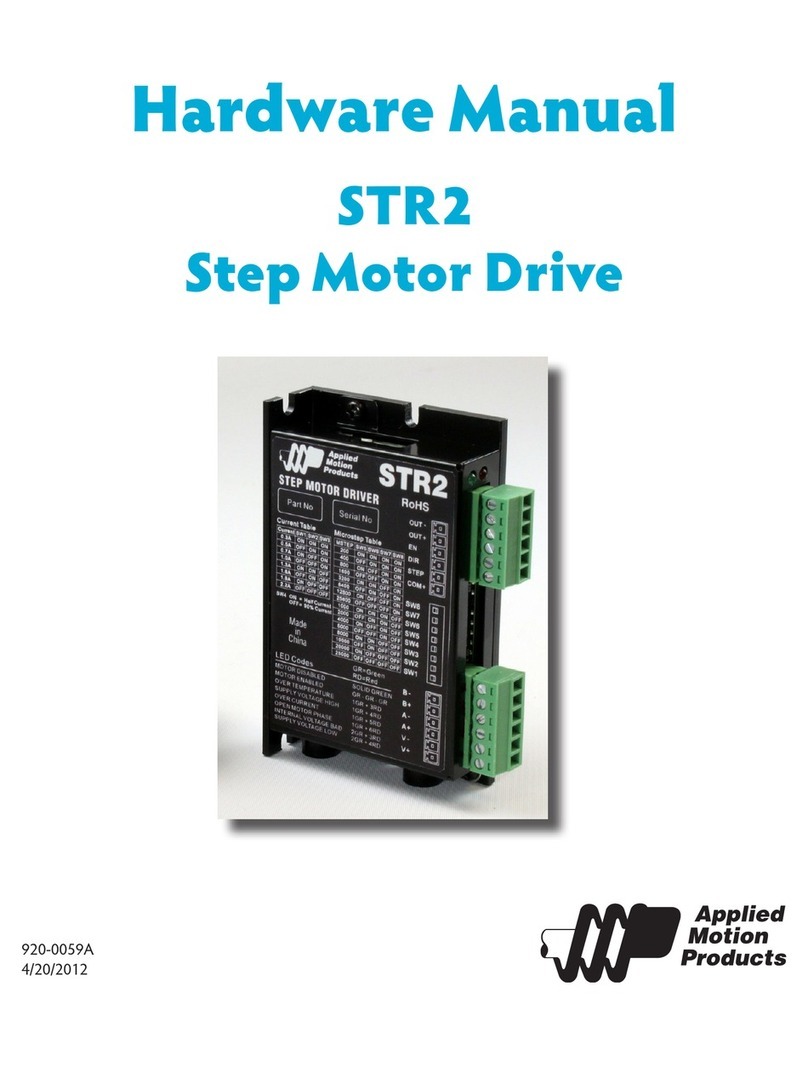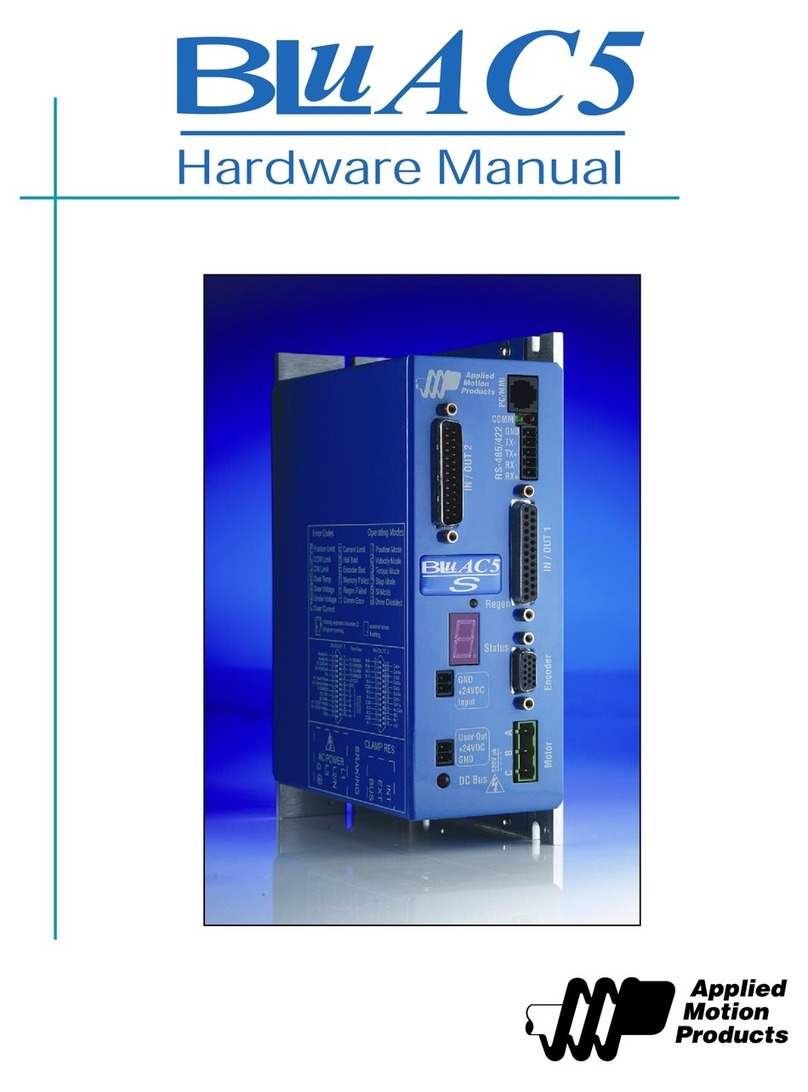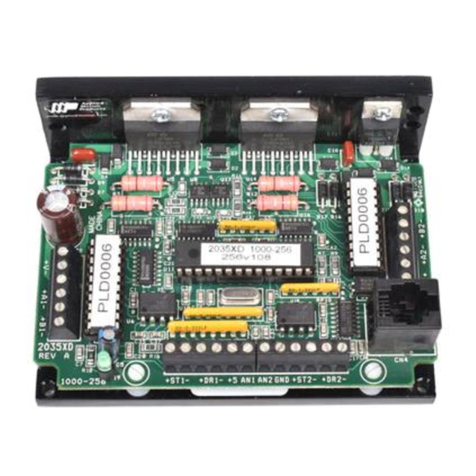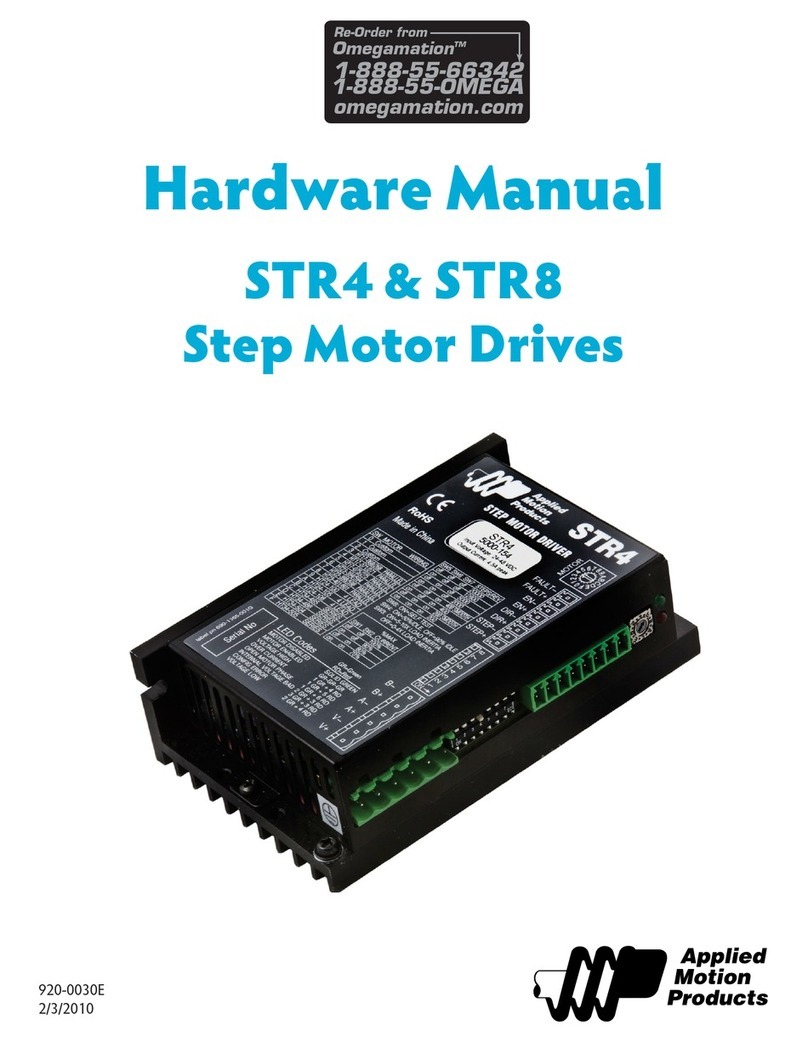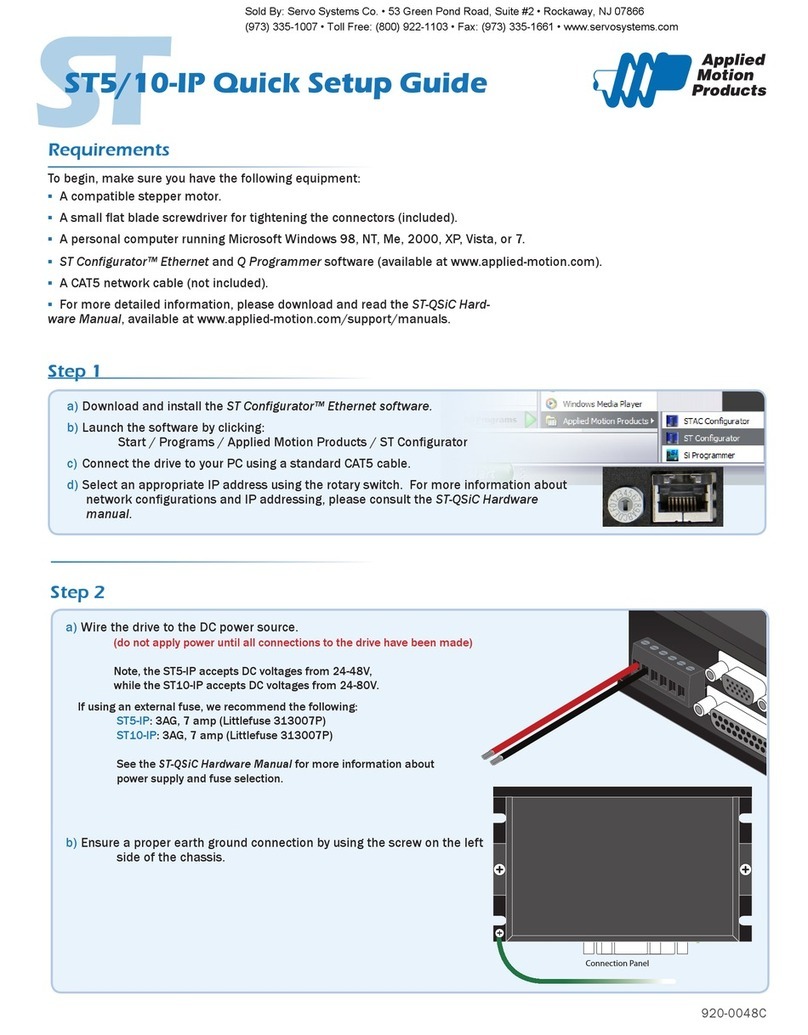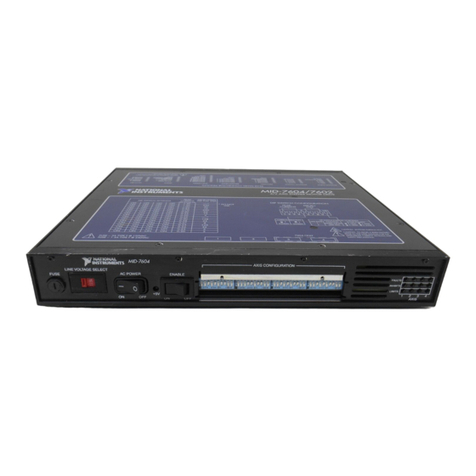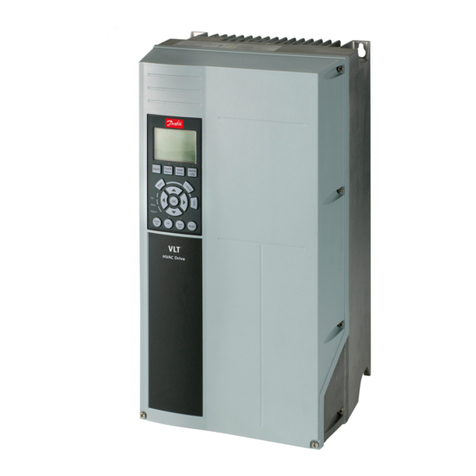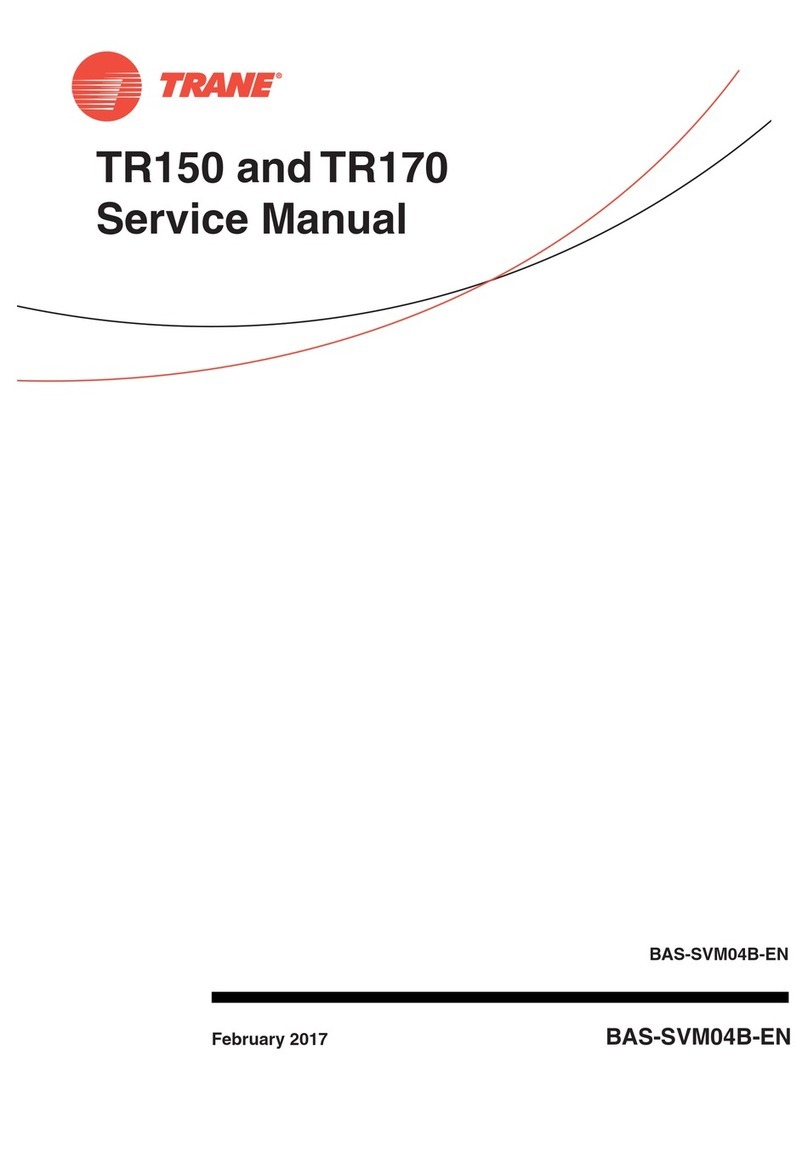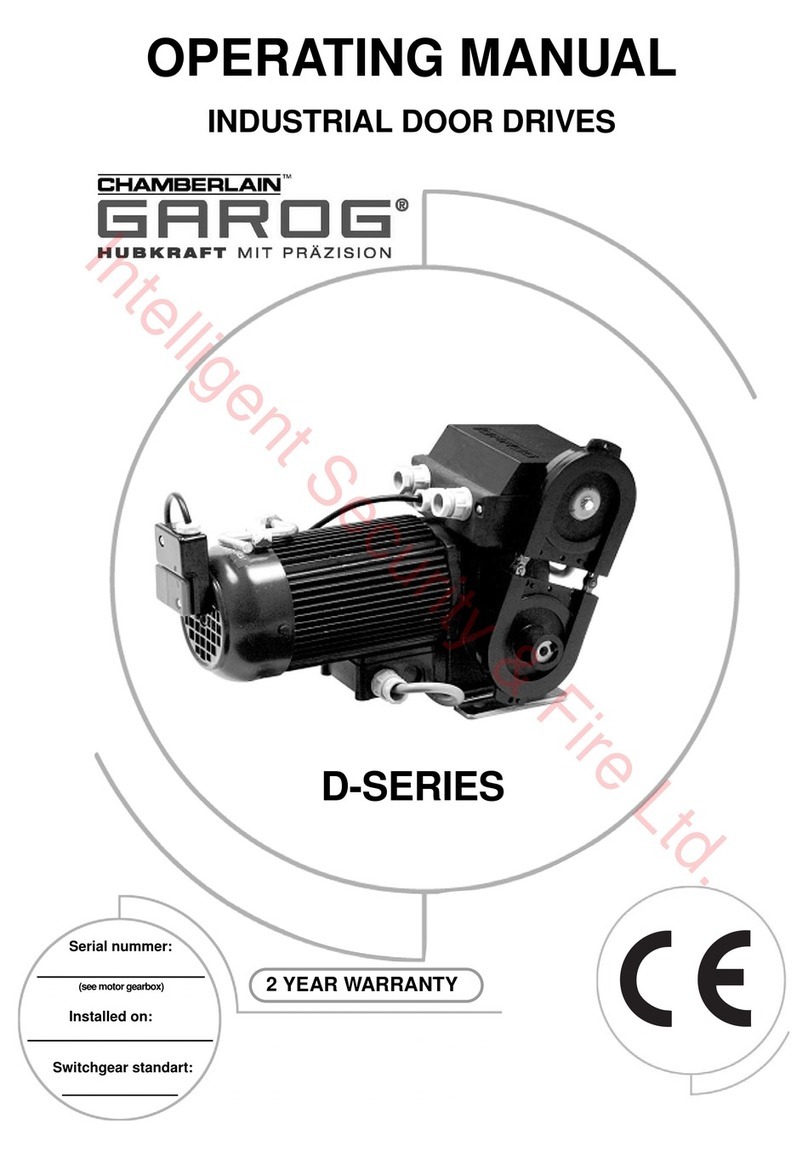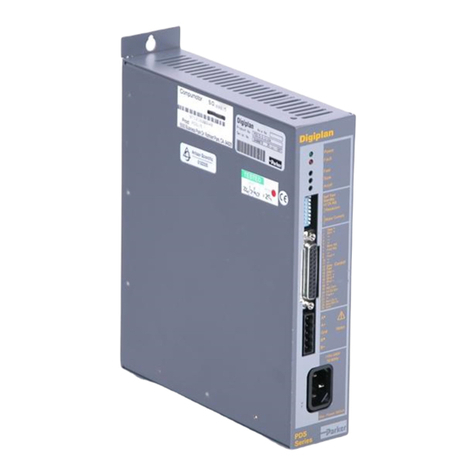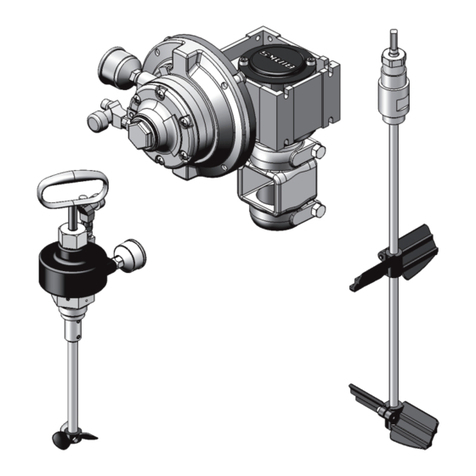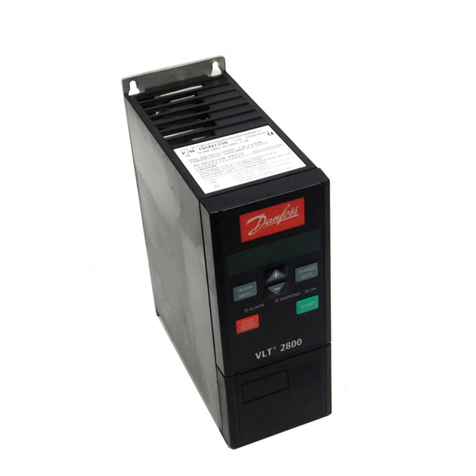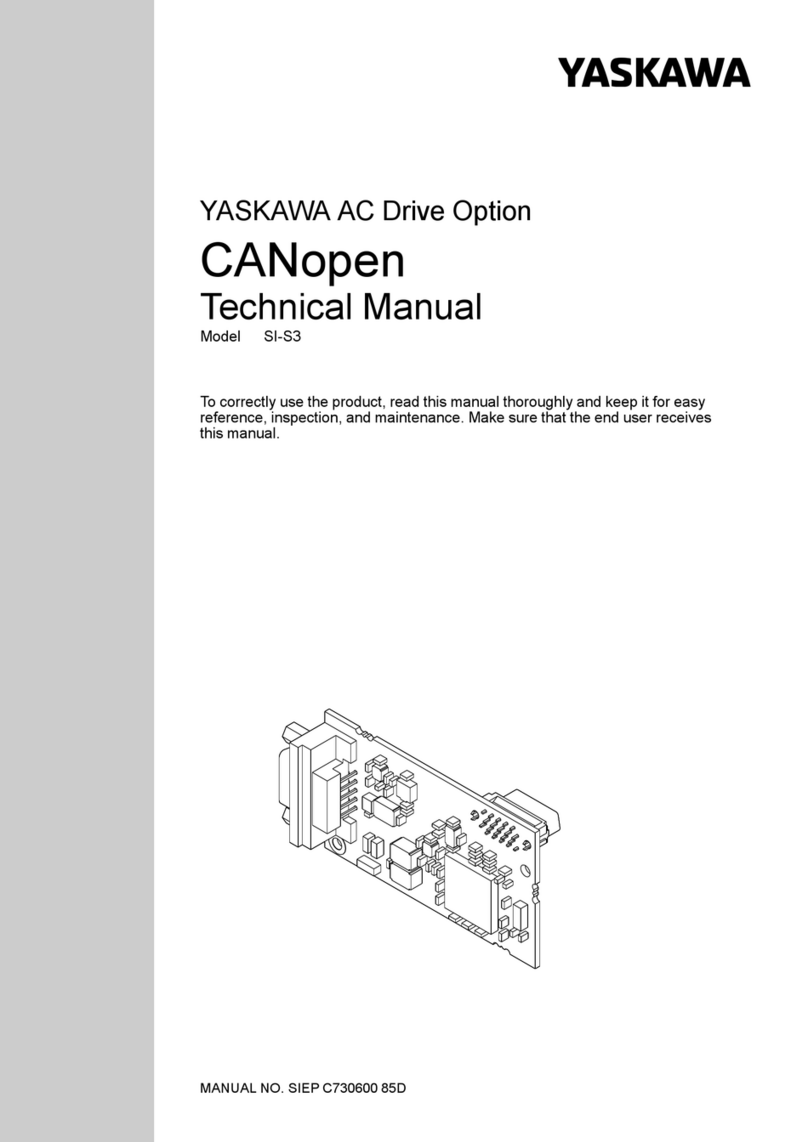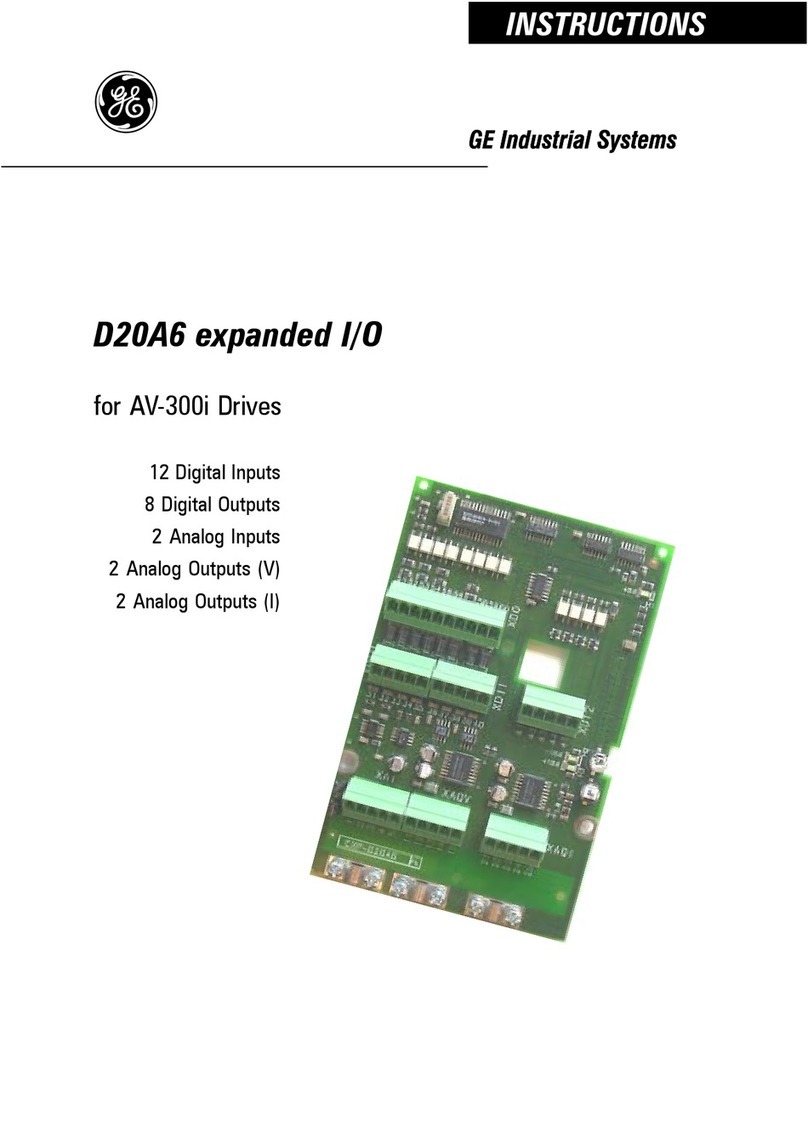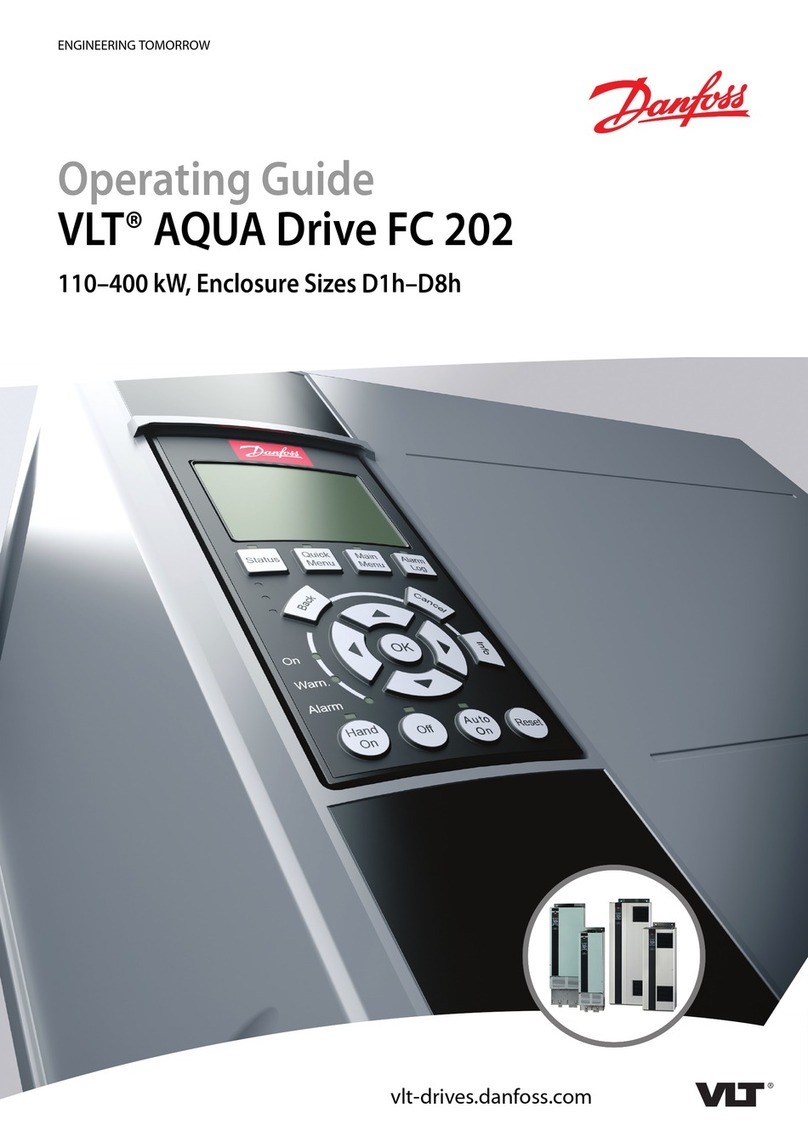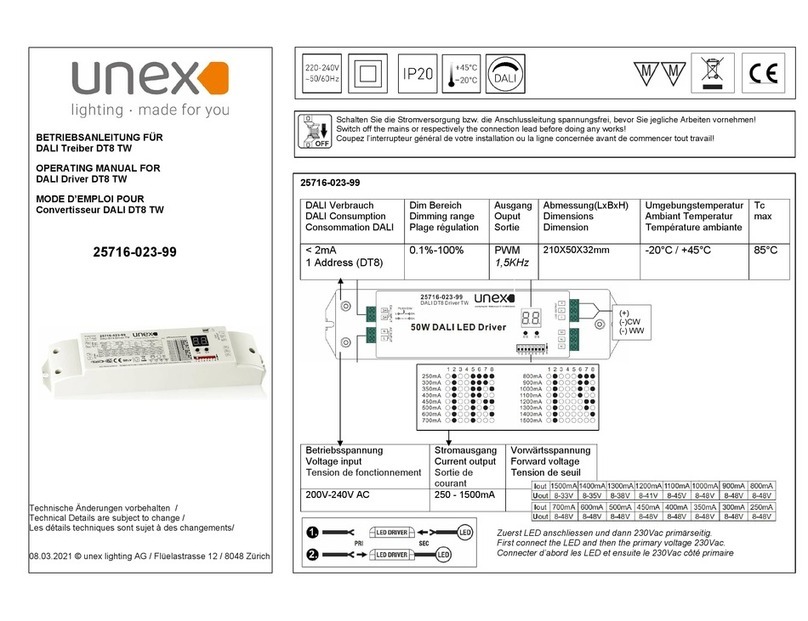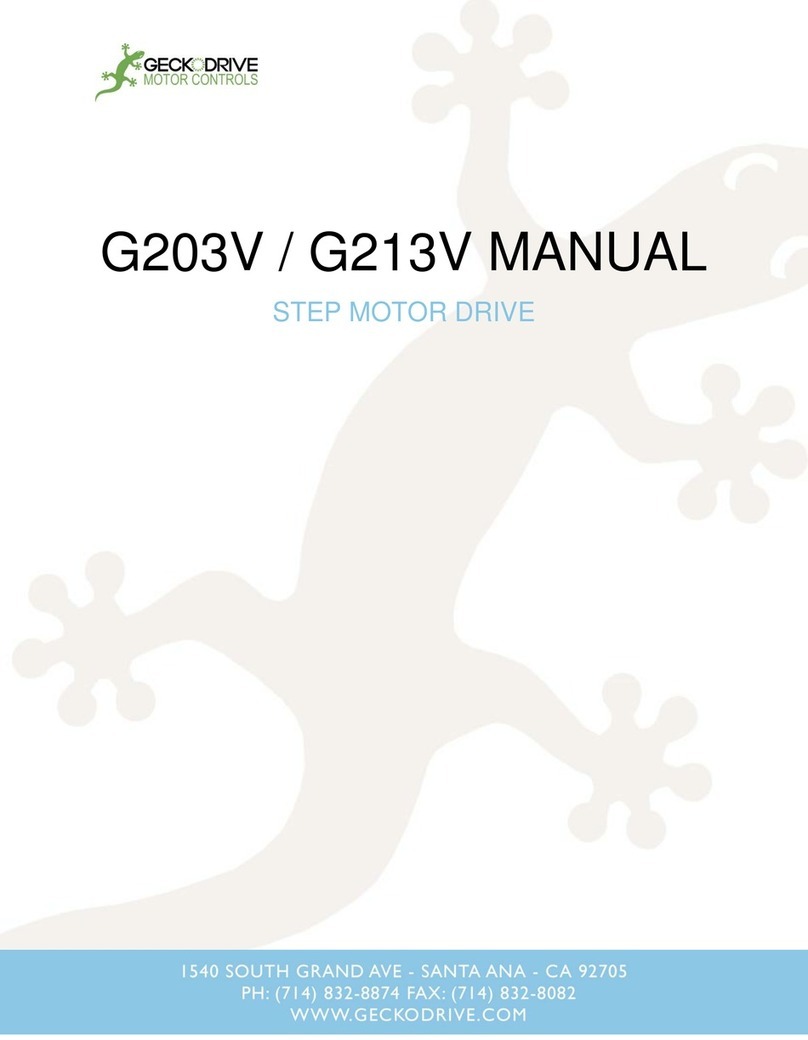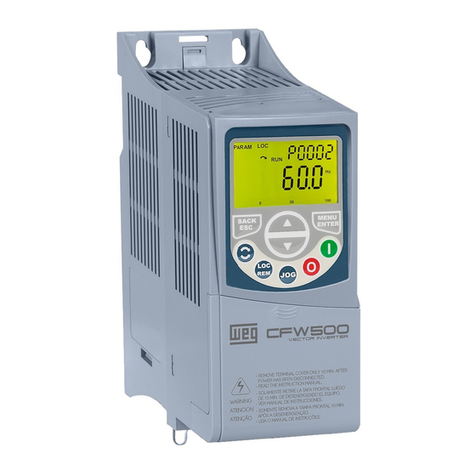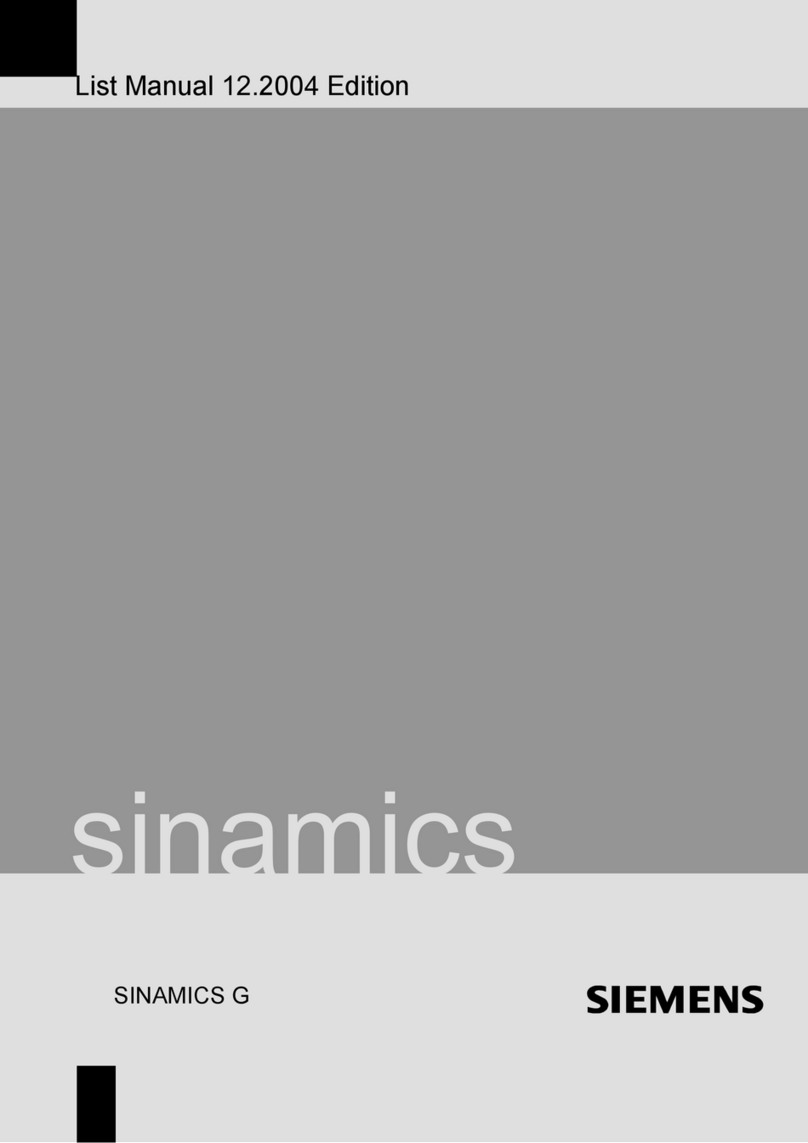
Technical Specifications
-15--2-
Amplifiers
Oscillator
Power Supply
Inputs
Pulse Out
Physical
Connectors
Fuse
Dual, bipolar recirculating H-bridge, pulse width modulated
switching at 20 kHz. 0.125 - 2.0 amps/phase output current, switch
selectable in 0.125 A increments. 50 watts maximum output power.
Automatic idle current reduction, reduces current to 50% of setting
after one second. Min. motor inductance 1 mH.
HI range: 100 - 12000 steps/sec range, 100 Hz resolution
LO range: 10 - 1200 steps/sec, 10 Hz resolution
Speed adjustable by 15 turn potentiometer, or user supplied
external pot, or 0 - 5 volt analog signal. Linear acceleration and
deceleration, individually adjustable from 750 to 200,000
steps/sec/sec, with single turn potentiometers.
110 or 220 VAC input, switch selectable. 50 - 60 Hz. 75 W max.
DC voltage at nominal line voltage: 28 VDC full load, 40 VDC no
load.
Step:
optically isolated, 5-24V, 730 ohm input impedance. Motor
steps on rising edge of step line. 10 µsec minimum low pulse. Step
input used as run/stop in oscillator mode. (closed = run, open =
stop.)
Direction and Enable:
optically isolated, 5-24V, 2200 ohm input
impedance. 50 µsec minimum set up time for direction signal.
Optically isolated, uncommitted (open collector, open emitter)
photo transistor. 30V, 20 mA max.
Constructed on black anodized aluminum heat transfer plate.
Covered by heavy gauge ventilated steel housing. 1.75 x 4.0 x 6.8
inches overall. Power on LED. See drawing on back cover for
more information. Ambient temperature range: 0 - 70˚C.
Pluggable screw terminal blocks.
Motor: 4 position. Wire size: AWG 12-22
Signals (step, dir, enable): 4 position, AWG 16-28.
Signals (tach, external speed pot): 5 position, AWG 16-28.
AC Power: 3 position, AWG 12-22.
1A UL rated, fast acting, TR5 style. Available from Digikey (800-
DIGIKEY) as part number WK3048BK.
Do I Have the Right Manual?
In April, 1999 we began shipping PDO 2035 drives. Prior to that, we made a similar
drive called the PD2035. The PDO 2035, which is the subject of this manual, sports
the following improvements:
• Connections to the Enable input, the external speed input or the TACH output
used to require a "crimped on" connector, which our customers found to be
complicated and difficult. We now use pluggable, screw terminal connectors for
everything.
• The Step, Dir and Enable inputs now support 5-24V signal levels without adding
dropping resistors or setting the old "5V/24V switch." You can also use sourcing
(PNP) or sinking (NPN) input signals. The PD2035 only accepted sinking signals.
So Which Drive Do I Have?
Just look at the front panel: it either reads "PDO 2035" or "PD2035".
If you have a PD2035, call or fax the factory and request the
"PD2035 User's Manual". You can also download the
manual, in Adobe PDF format, from our website at
www.applied-motion.com.
